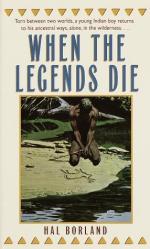|
This section contains 343 words (approx. 1 page at 400 words per page) |

|
1800s: Cowboys show their skills at roping calves and riding wild horses during the large spring roundup of cattle out on the plains.
1900s: Cowboys follow a rodeo circuit across North America that includes over two thousand shows a year. Most performers belong to an organized group called the Cowboys Turtle Association (CTA).
Today: Cowboys have a large following of fans (estimated at over 13 million) who either watch them perform live at rodeo arenas across the United States and Canada or see them on weekend broadcasts on television.
1800s: The Ute Indians roam the San Juan Mountains in search of food and stop at the Pagosa (which is Ute for "healing waters") springs to cure themselves of the pains of rheumatism and other health problems.
1900s: The U.S. government sets up a fort near the Pagosa springs and a white settlement called Pagosa...
|
This section contains 343 words (approx. 1 page at 400 words per page) |

|




